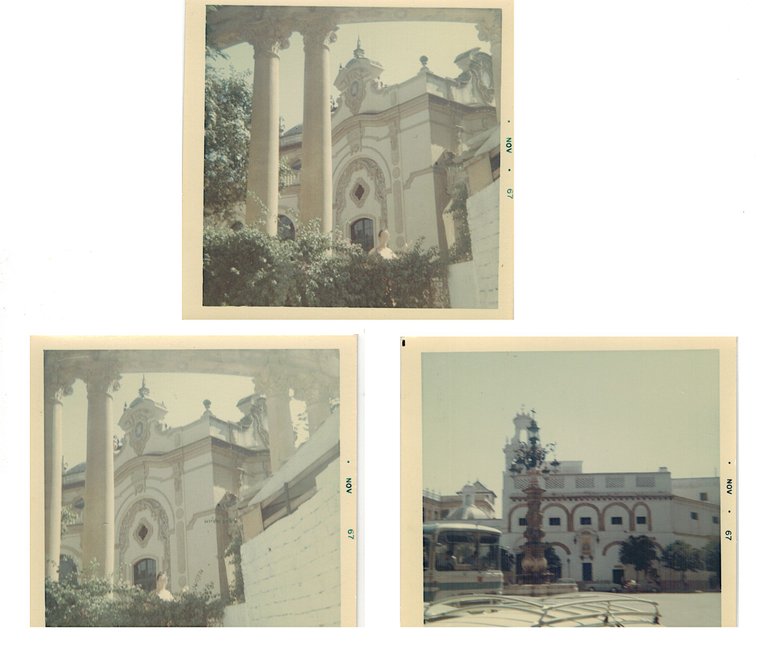
Hello friends, have you heard about the Camino de Santiago? For those who do not know, the Camino de Santiago is a pilgrimage made by Catholics following the same route that the apostle Jacob, also known as Santiago, did when he arrived in Spain preaching the gospel of Jesus.
And the goal of that journey is the Cathedral of Santiago de Compostela, where the remains of the apostle rest.
We did not take the route, we took the train. 😁 But doing the Camino de Santiago is something that many people do every year and although the route is 900 km long, if you do at least 100 km you get your pilgrim's certificate. My sister-in-law did this route years ago and remembers it as a great experience.
What I want to do today is to share with you images of this impressive cathedral, I will tell you about the Camino de Santiago when I do it.
Hola amigos, han oido hablar del Camino de Santiago? Para los que no saben, el Camino de Santiago es una peregrinación que hacen los católicos siguiendo el mismo recorrido que hizo el apóstol Jacob o también conocido como Santiago, cuando llegó a España predicando el evangelio de Jesús.
Y la meta de ese recorrido es la Catedral de Santiago de Compostela, donde descansan los restos del apóstol.
Nosotros no hicimos el recorrido, nosotros tomamos el tren. 😁 Pero hacer el recorrido del Camino de Santiago, es algo que hacen muchas personas cada año y aunque el recorrido es de 900 kms con recorrer al menos 100 ya obtienes tu certificado de peregrino. Mi cuñada hizo este recorrido hace años y lo recuerda como una gran experiencia.
Lo que hoy quiero es compartir con ustedes imágenes de esta impresionante catedral, del Camino de Santiago les hablaré cuando yo lo haga.
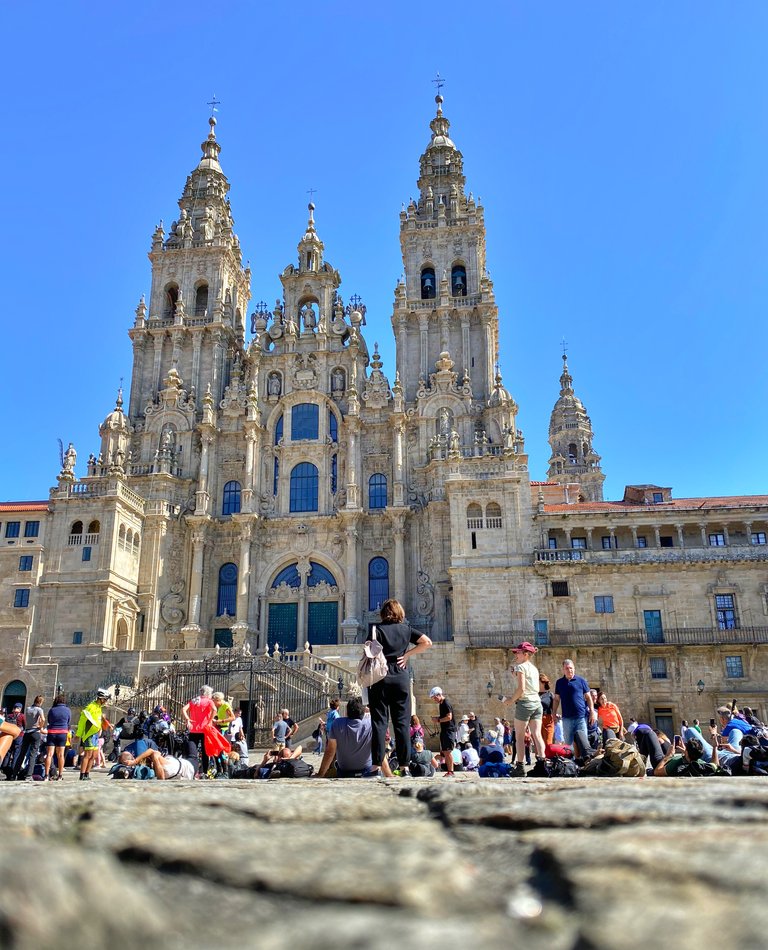
The cathedral began to be built in 1075 during the mandate of King Alfonso II, and it all began with the discovery of the remains of the apostle Santiago, then the king ordered to build the cathedral to house the remains of the apostle. From the construction of the cathedral, the city began to grow around it, and this monument became the emblematic symbol of the Catholics and of the city.
The cathedral grew over time as the number of pilgrims and visitors to the masses grew as the place became famous. The building has several facades and each one has a different architecture, they were made by different architects and in different times of history. Being the Western façade the most emblematic, because it is the one that is in the largest square and is where all the pilgrims arrive, this façade used to have a romantic architecture but it was demolished and replaced by a baroque architecture in 1738.
When we see this facade we may think it is the main entrance to the cathedral, but no, the entrance is on the side and it is another facade called Platerías which still preserves its romantic architecture.
Inside the cathedral there is a museum with historical pieces of Catholicism and there is also a tour to the tomb of the apostle Santiago and to the towers of the church to enjoy a higher view but all that has a cost. The only thing you can do inside without paying is to walk through the main nave to the main altar and the chapels adjacent to the main nave, which is also very nice to look at, in fact almost all the pictures I took of the interior are of the altar and chapels.
La catedral empezó a construirse en 1075 durante el mandato del rey Alfonso II, y todo empezó por el descubrimiento de los restos del apóstol Santiago, entonces el rey ordenó construir la catedral para albergar los restos del apóstol. A partir de la construcción de la catedral la ciudad empezó a crecer alrededor de ella quedando este monumento en el centro de todo, y convirtiéndose en el símbolo emblemático de los católicos y de la ciudad.
La catedral fue creciendo con el tiempo ya que la cantidad de peregrinos y visitantes a las misas fue creciendo a medida que se hacía famoso el lugar. La edificación tiene varias fachadas y cada una tiene una arquitectura diferente, fueron realizadas por diferentes arquitectos y en tiempos diferentes de la historia. Siendo la fachada Occidental la más emblemática, porque es la que está en la plaza más grande y es donde llegan todos los peregrinos, esta fachada antes tenía una arquitectura romántica pero fue derribada y reemplazada por una arquitectura barroca en 1738.
Al ver esta fachada podemos pensar que es la entrada principal a la catedral, pero no, la entrada esta a un costado y es otra fachada que se llama Platerías la cual aún conserva su arquitectura romántica.
Dentro de la catedral hay un museo con piezas históricas del catolicismo y también hay un recorrido hasta la tumba del apóstol Santiago y a las torres de la iglesia para disfrutar de una vista más elevada pero todo eso tiene un coste. Lo único que puedes hacer en el interior sin pagar es recorrer la nave principal hasta la altar mayor y las capillas adyacentes a la nave principal, que también es muy bonito de observar, de echo casi todas las fotos que tomé del interior son del altar y de las capillas.
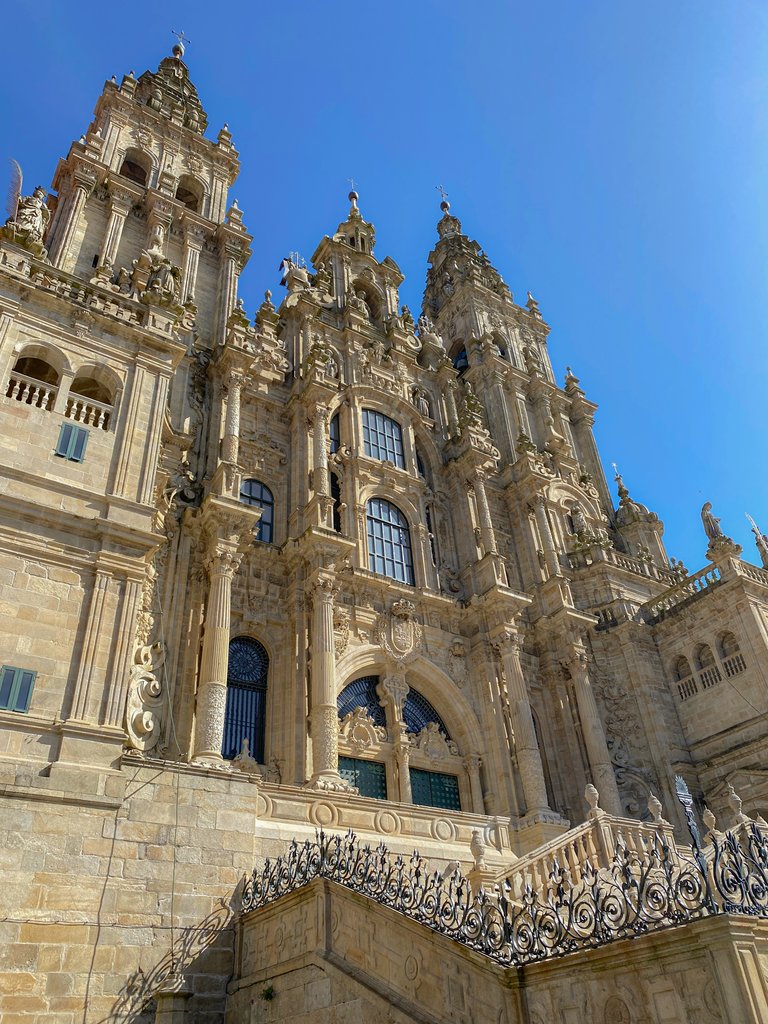
The Cathedral of Santiago de Compostela is located in the capital of the province of Galicia in Spain, and although it is the most representative monument of Catholics, many non-Catholics go to the place just to admire its architecture.
La Catedral de Santiago de Compostela queda en la capital de la provincia de Galicia en España, y aunque es el monumento más representativo de los católicos muchas personas que no son católicas acuden al lugar solo para admirar su arquitectura.
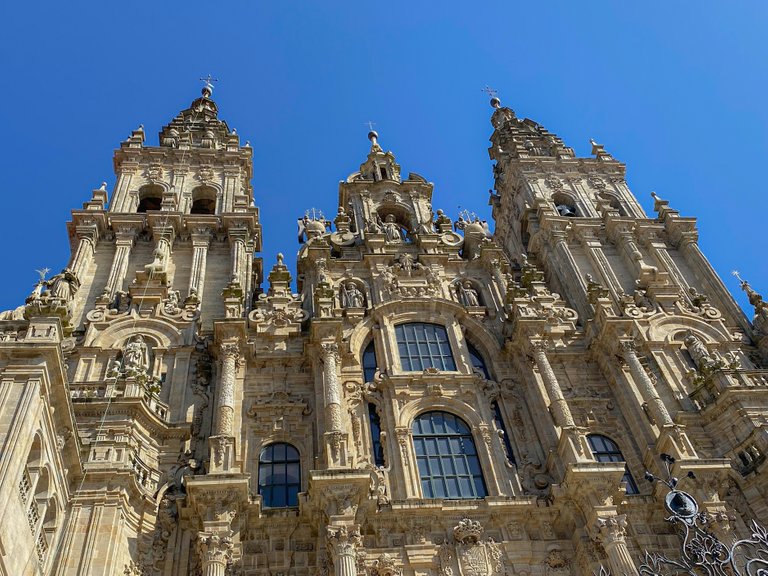
Western facade and Obradoiro Square
This is the most attractive façade of the Cathedral, it has a baroque architecture and was built in the 18th century. In this square is where pilgrims rest after their long journey and where tourists also sit to contemplate the magnificence of this monument.
Esta es la fachada más vistosa de la Catedral, posee una arquitectura barroca y fue construida en el siglo XVIII. En esta plaza es donde descansan los peregrinos después de su largo recorrido y donde también los turistas se sientan a contemplar la magnificencia de este monumento.
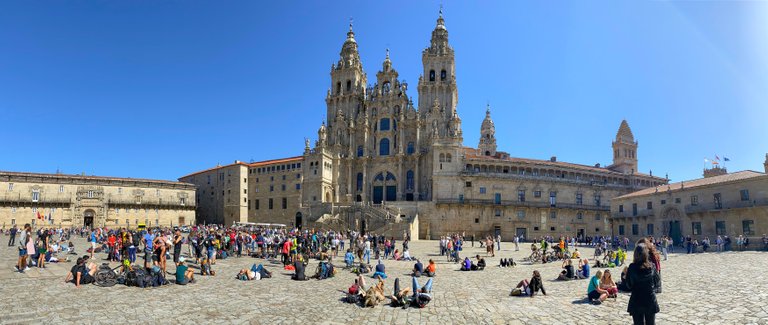
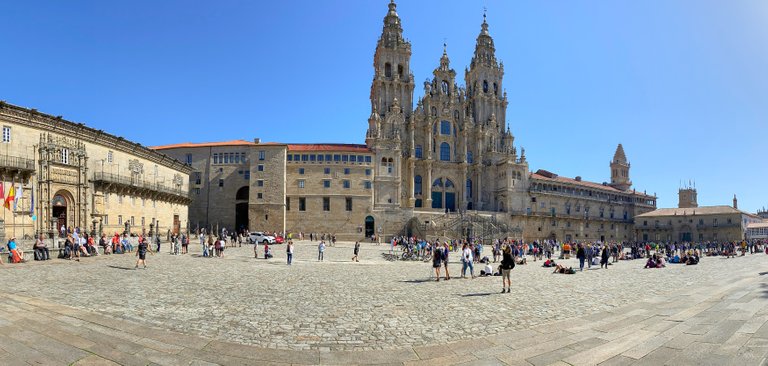
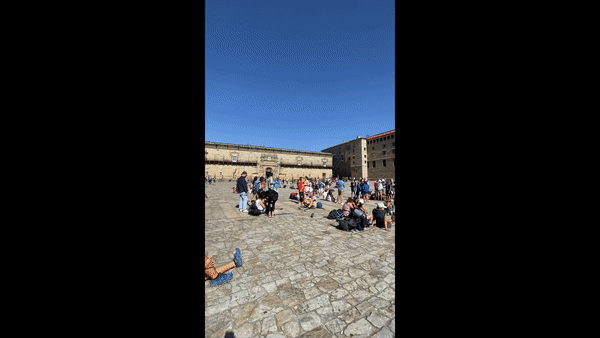

Inside the Cathedral
These are images of the main nave and the end is the main chapel, those points that you can see at the top are organs that were placed in 1705.
The plan of the Cathedral of Compostela has a cross shape where the longest part is the main nave and in its aisles on the sides there are several chapels apart from the main chapel or main altar, as it is also known.
Estas son imágenes de la nave principal ya al final se encuentra la capilla mayor, esas puntas que pueden observar en la parte superior son unos órganos que se colocaron en 1705.
El plano de la Catedral de Compostela tiene forma de cruz donde la parte más larga es la nave principal y en sus pasillos a los lados hay varias capillas mas aparte de la capilla mayor o altar principal, como también se conoce.
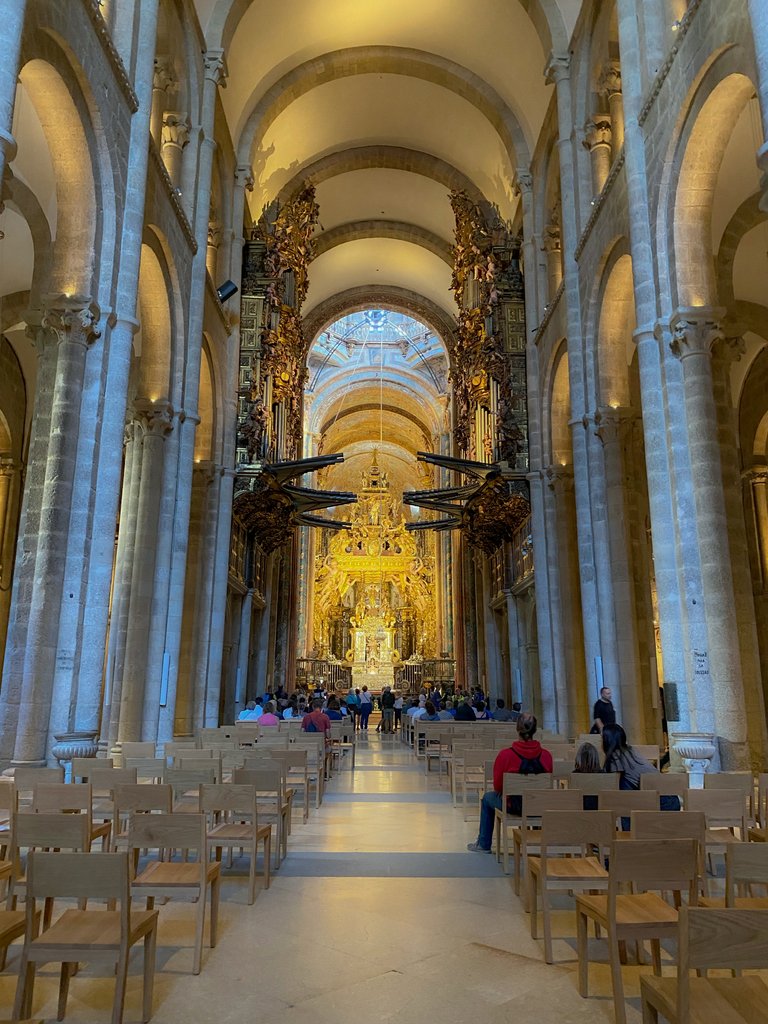
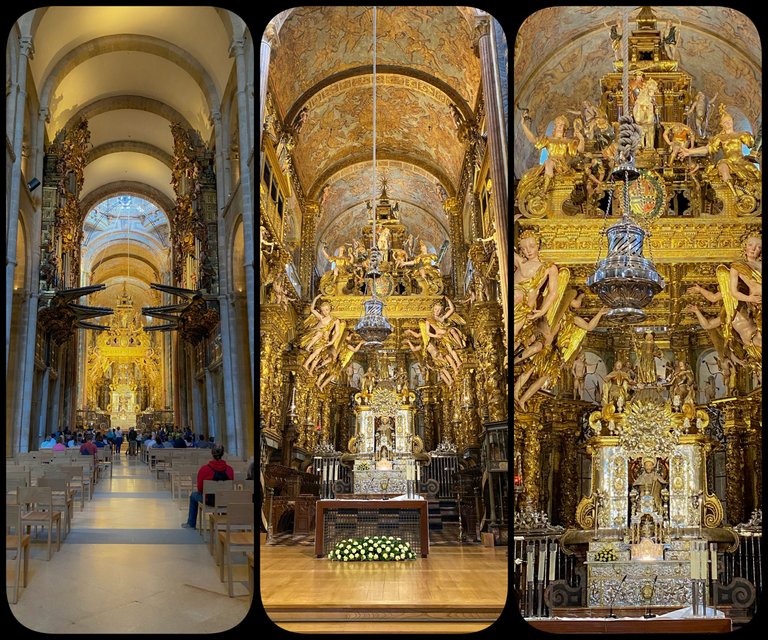
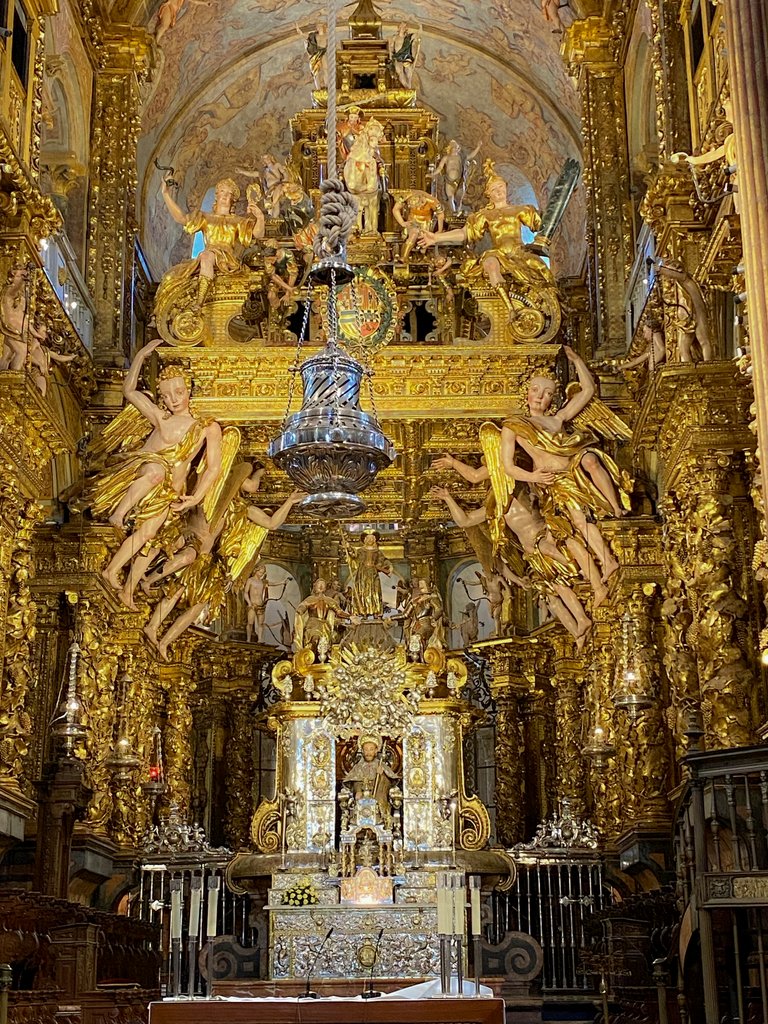
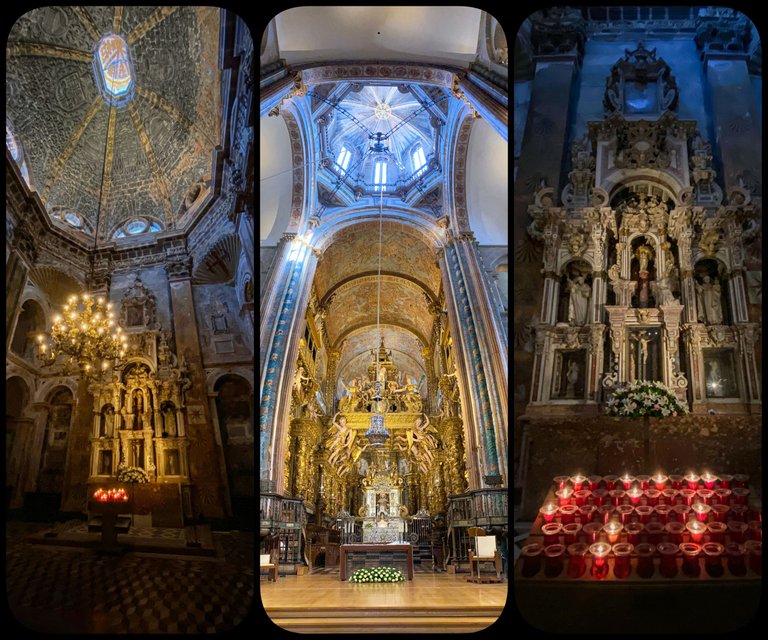

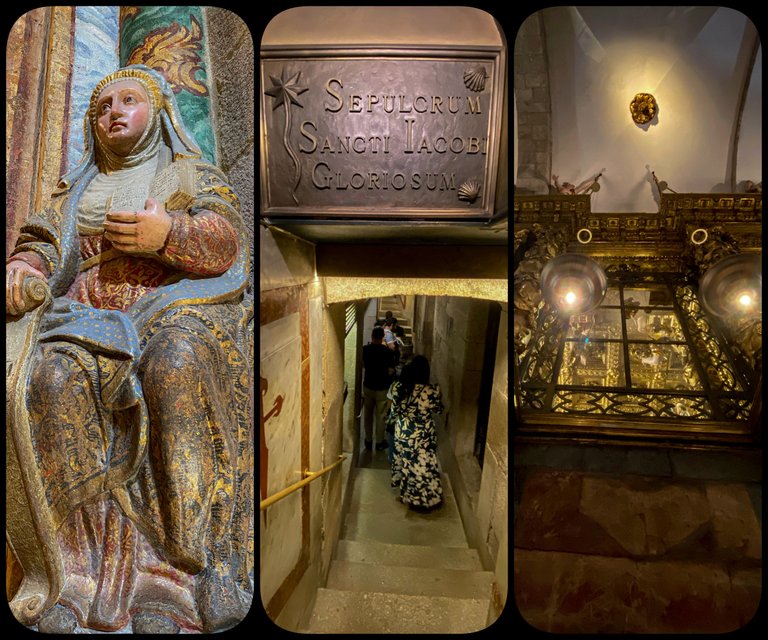
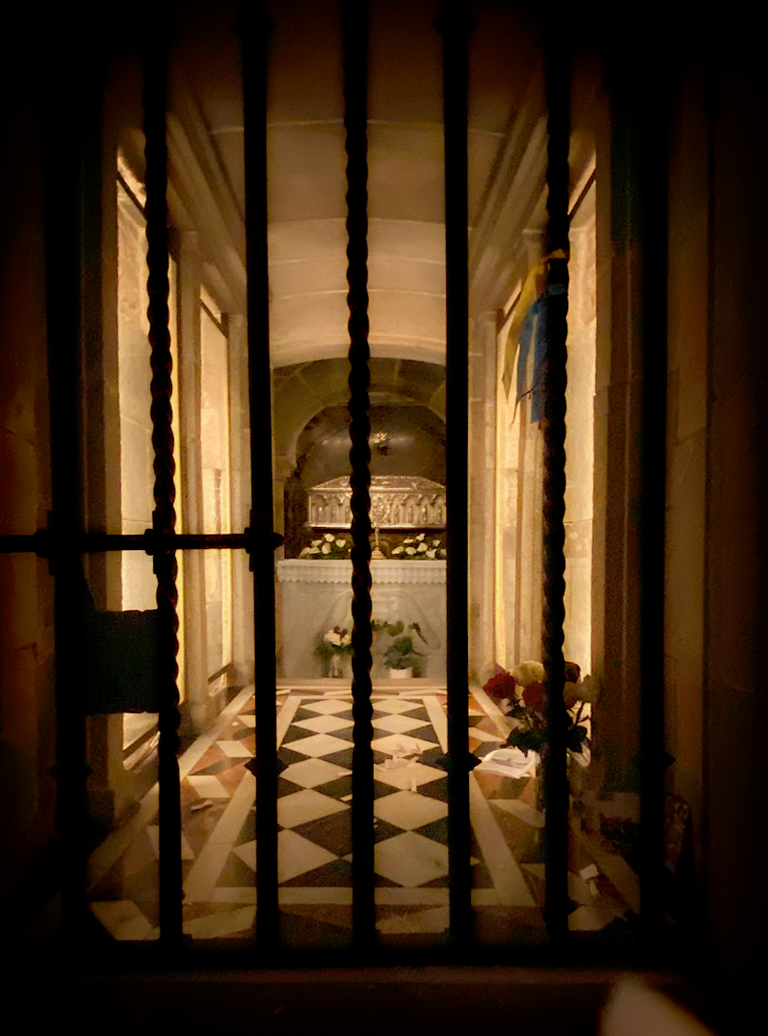
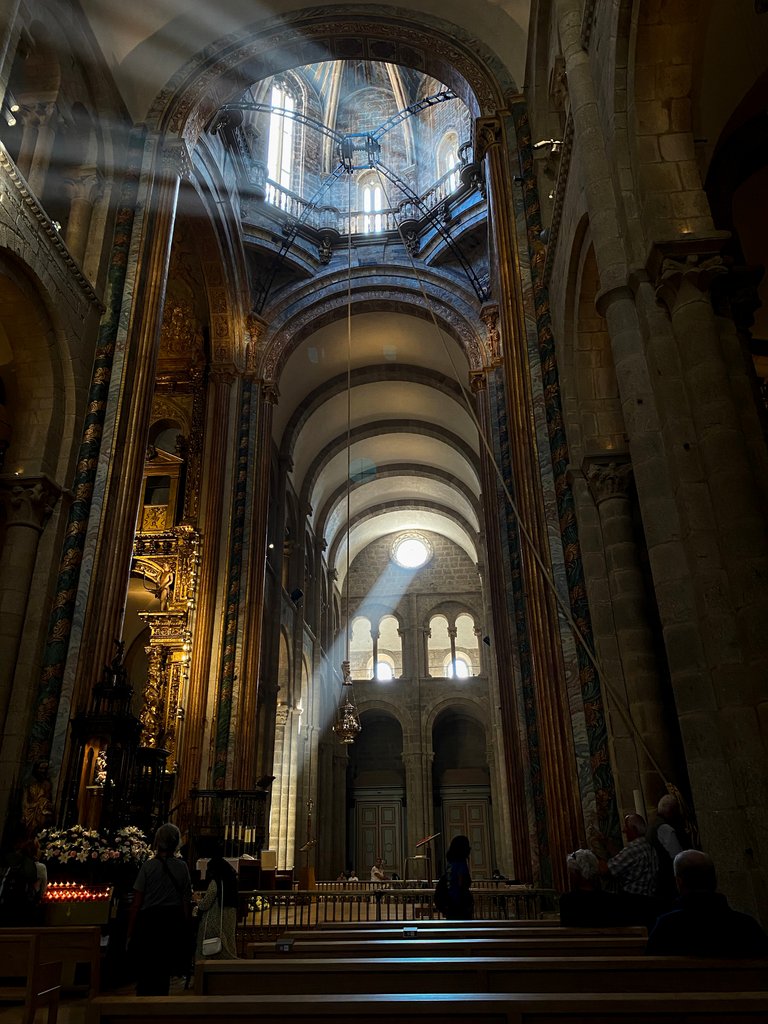
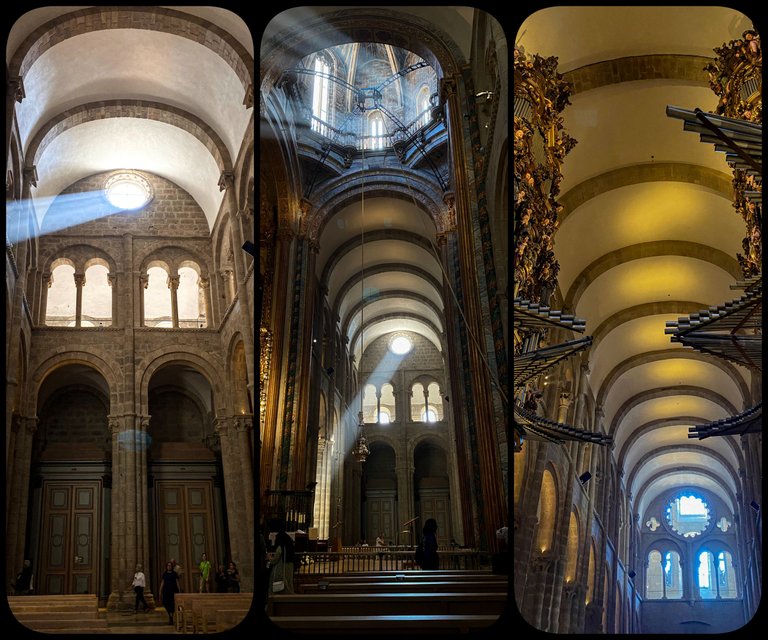
It is a spectacle to observe how the natural light enters softly through these windows and faintly illuminates this corridor or nave, I think it gives a heavenly aura to the place.
I regret not being able to take pictures with my camera, I had already read that they do not allow backpacks or cameras to enter the place so I did not take it with me, they only let you take pictures with your cell phone but without using the flash.
Take into account the above mentioned in case you decide to visit this place someday, I also recommend taking the whole day to see all its corners, and the buildings around. I was eager to return because it was a very short visit to Santiago.
Es un espectáculo observar como la luz natural entra suavemente por estas ventanas he iluminan tenuemente este pasillo o nave, creo que da un aura celestial al lugar.
Lamento no haber podido hacer tomas con mi cámara ya había leído que no dejan entrar con mochilas ni con cámaras al lugar por lo que no la llevé, solo te dejan tomar fotos con el celular pero sin usar el flash.
Toma en cuenta lo arriba mencionado por si decides algún día visitar este lugar, también recomiendo tomarse todo el día para conocer todos sus rincones, y los edificios alrededor. Yo quedé con ganas de regresar porque fue muy corta mi visita a Santiago.
This is the end of my tour of this emblematic place, I hope you liked it, tell me what you thought and if you have ever visited it.
Sources consulted: 1, 2, 3, 4, 5

Thanks for stopping by




